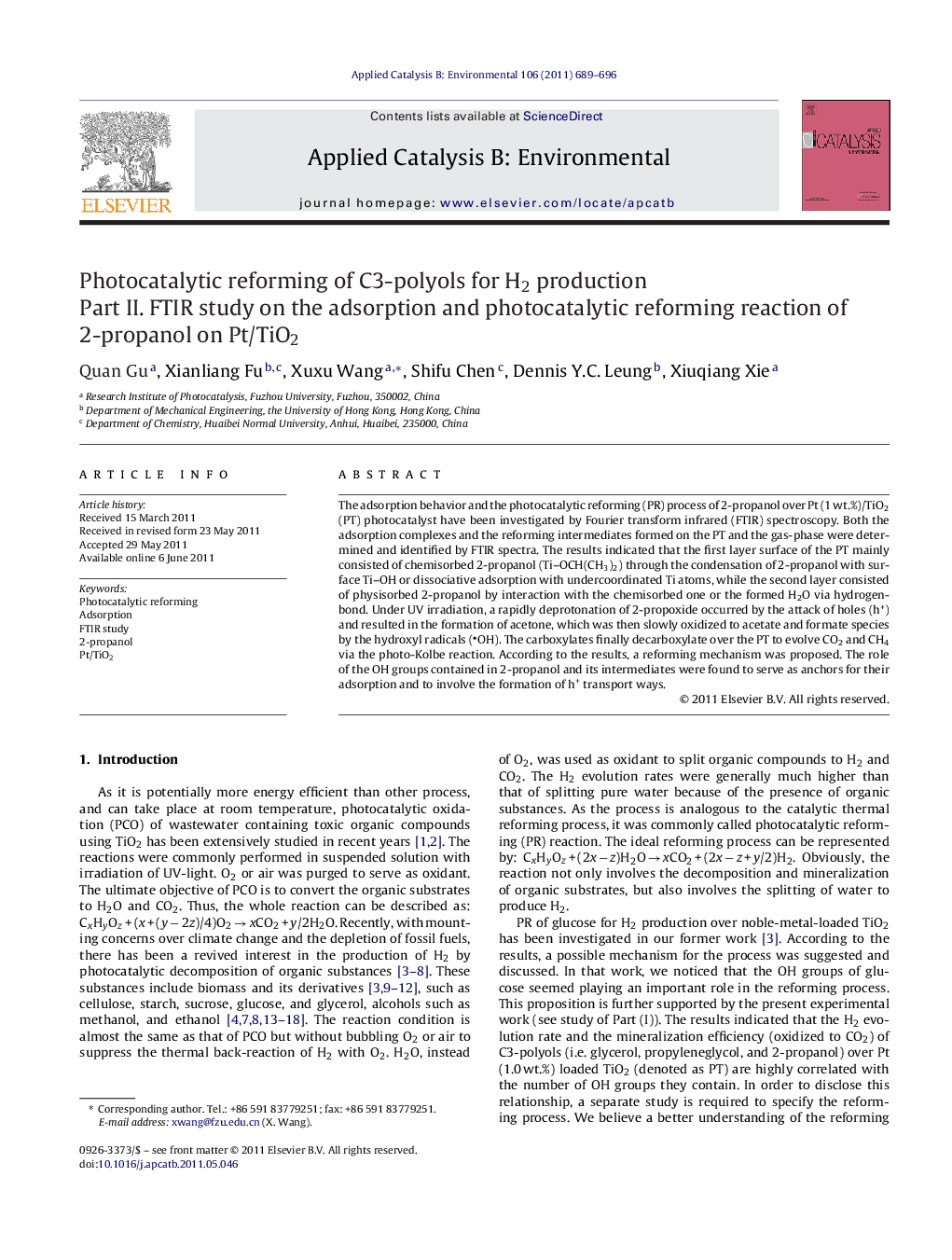| Article ID | Journal | Published Year | Pages | File Type |
|---|---|---|---|---|
| 46950 | Applied Catalysis B: Environmental | 2011 | 8 Pages |
The adsorption behavior and the photocatalytic reforming (PR) process of 2-propanol over Pt (1 wt.%)/TiO2 (PT) photocatalyst have been investigated by Fourier transform infrared (FTIR) spectroscopy. Both the adsorption complexes and the reforming intermediates formed on the PT and the gas-phase were determined and identified by FTIR spectra. The results indicated that the first layer surface of the PT mainly consisted of chemisorbed 2-propanol (Ti–OCH(CH3)2) through the condensation of 2-propanol with surface Ti–OH or dissociative adsorption with undercoordinated Ti atoms, while the second layer consisted of physisorbed 2-propanol by interaction with the chemisorbed one or the formed H2O via hydrogen-bond. Under UV irradiation, a rapidly deprotonation of 2-propoxide occurred by the attack of holes (h+) and resulted in the formation of acetone, which was then slowly oxidized to acetate and formate species by the hydroxyl radicals (OH). The carboxylates finally decarboxylate over the PT to evolve CO2 and CH4 via the photo-Kolbe reaction. According to the results, a reforming mechanism was proposed. The role of the OH groups contained in 2-propanol and its intermediates were found to serve as anchors for their adsorption and to involve the formation of h+ transport ways.
Graphical abstractFigure optionsDownload full-size imageDownload as PowerPoint slideHighlights► Both the adsorption complexes and the reforming intermediates formed on the PT and the gas-phase were determined and identified by FTIR spectra. ► The adsorption process and the photocatalytic reforming mechanism of 2-propanol was proposed. ► The OH groups contained in 2-propanol are serve as anchors for their adsorption and involve the formation of charge transport ways, which facilitates their oxidation by photogenerated holes.
